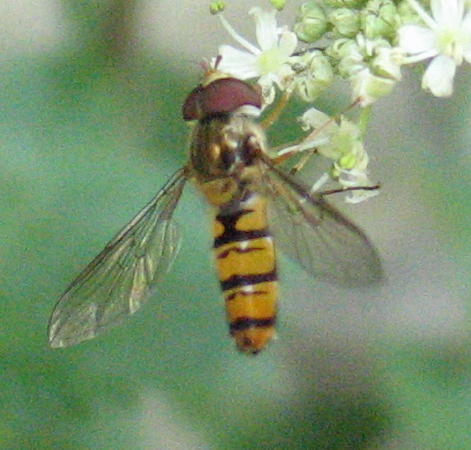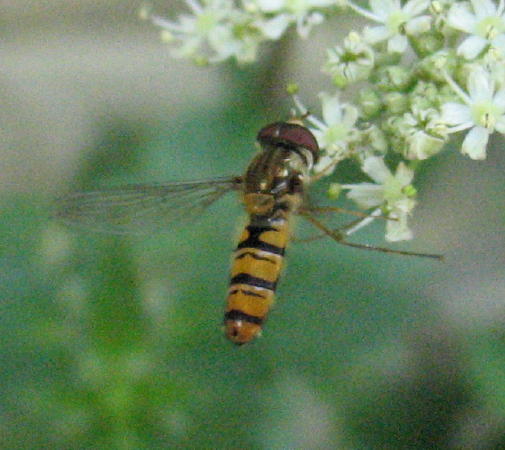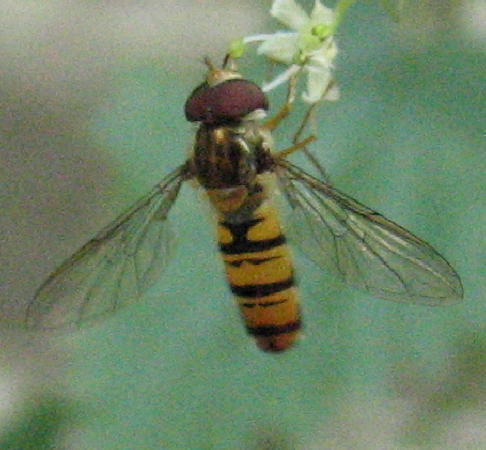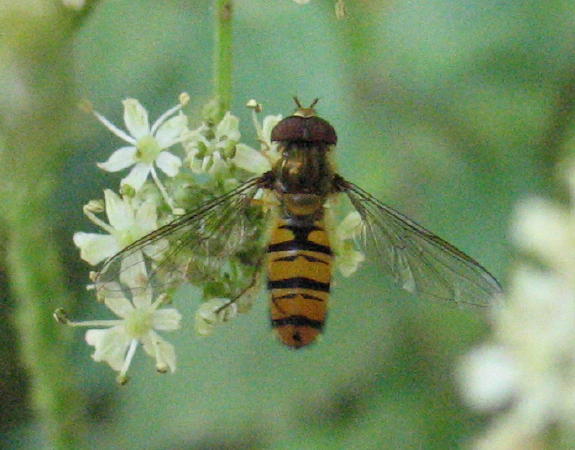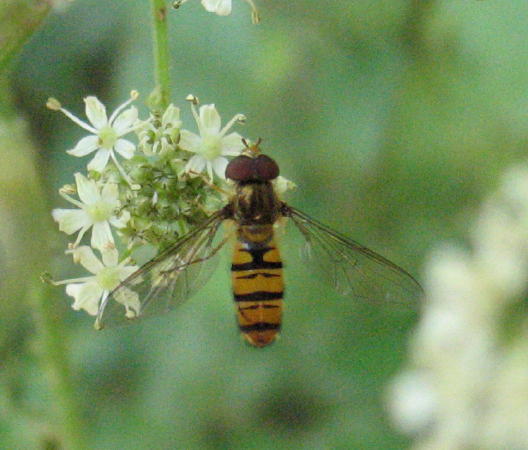Back To

Back To

Classification Order: Diptera – true flies Family: Conopodiae
Length .9 – 12 mm
Phenology
January to December peaking in August. Migrants can also boost population numbersIdentification
Its has 2 'moustache' black bands on tergites 3 and 4 of its abdomen Some specimens also show white bands on the abdomen, whilst other forms are quite dark.Life Cycle
Can be observed in most months of the year t in part due towinter hibernationand emerging on warmer days. Numbers are also boosted by migrants.
Habitat
Gardens, hedgerows, parks and woodland in sunny spots.
Biology: The larvae have been recorded preying on a broad range of aphid species on trees, shrubs and herbs, including cereal crops and cabbages (especially in gardens), but appears to prefer aphid colonies low down. Adults are usually seen visiting flowers or basking on sunlit foliage. They are very frequent in gardens, parks and waste ground including those in urban areas, sometimes in considerable numbers
Distribution: This species migrates north from southern Europe in the spring, breeding along the way. Migrants typically arrive in Britain in late June and July when aphid numbers are building up, and larvae can reach high densities in cereal crops, resulting in vast numbers of emerging adults in late summer. In the autumn it migrates southwards again and the adults overwinter. It normally has a single generation in Britain, but some adults overwinter here and unseasonal records can occur if the weather is mild. This is one of the most abundant and widespread hoverflies, and the species for which the recording scheme has received most records, although numbers vary considerably from year to year depending on conditions for migration and on aphid numbers
